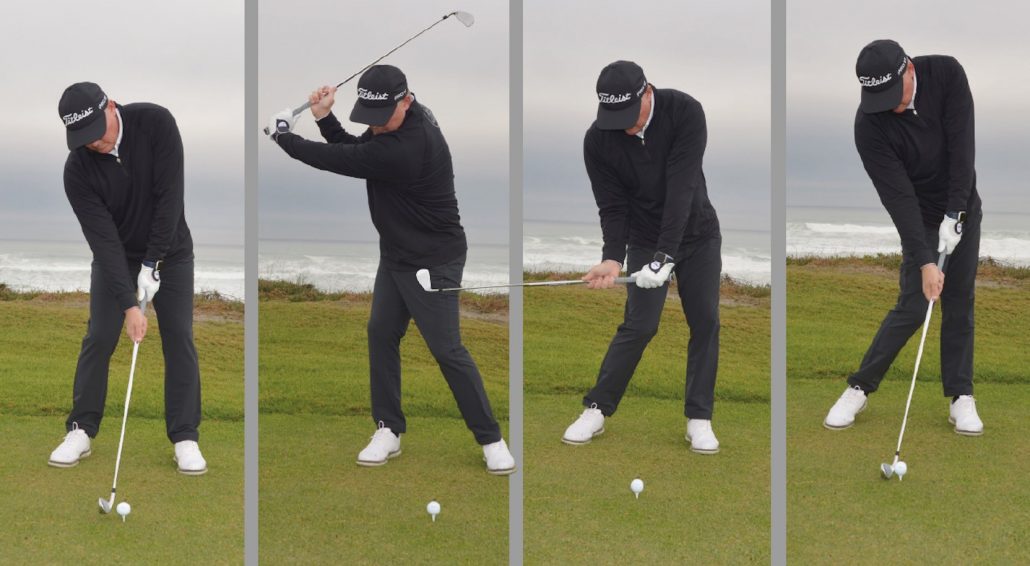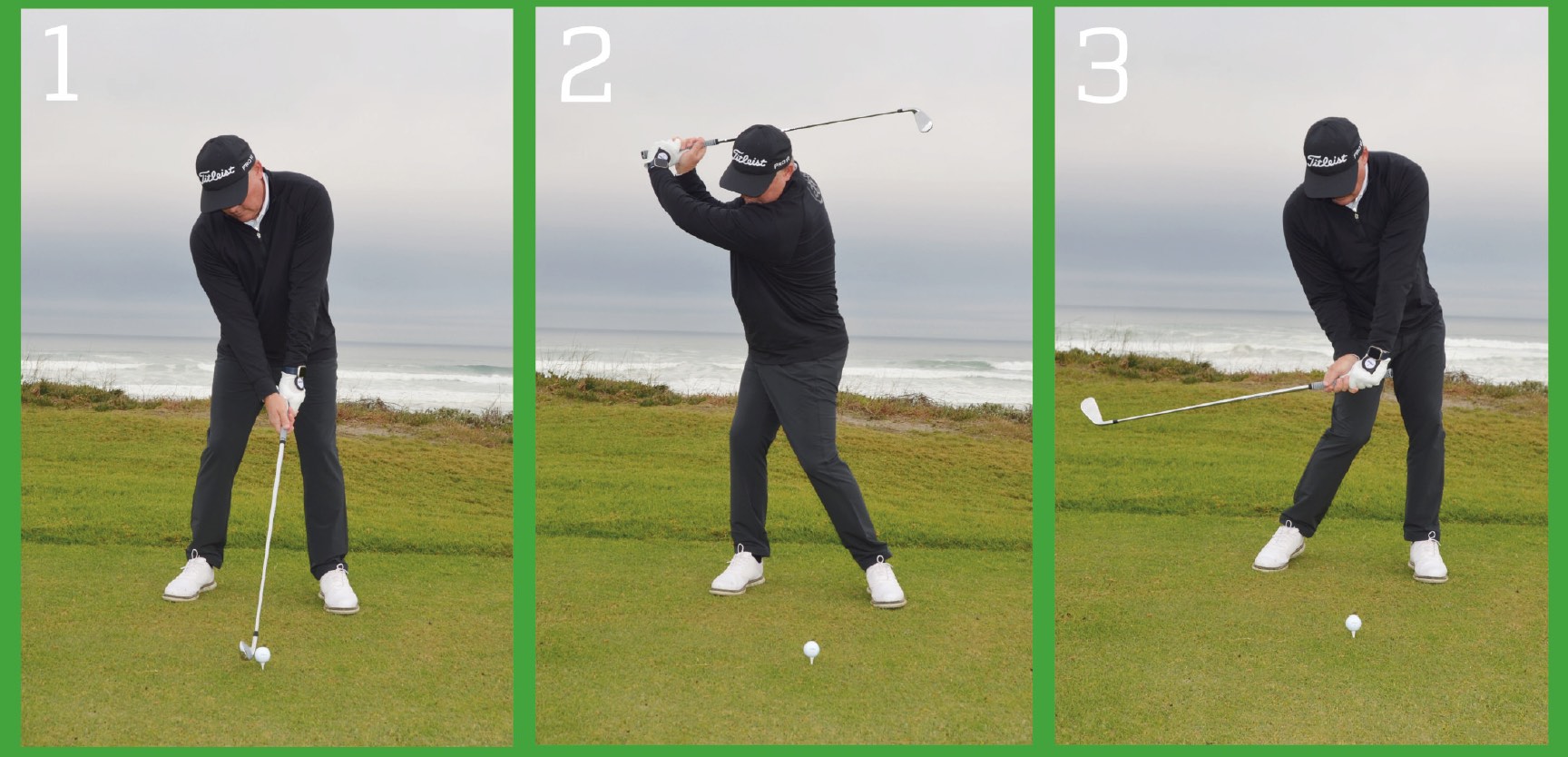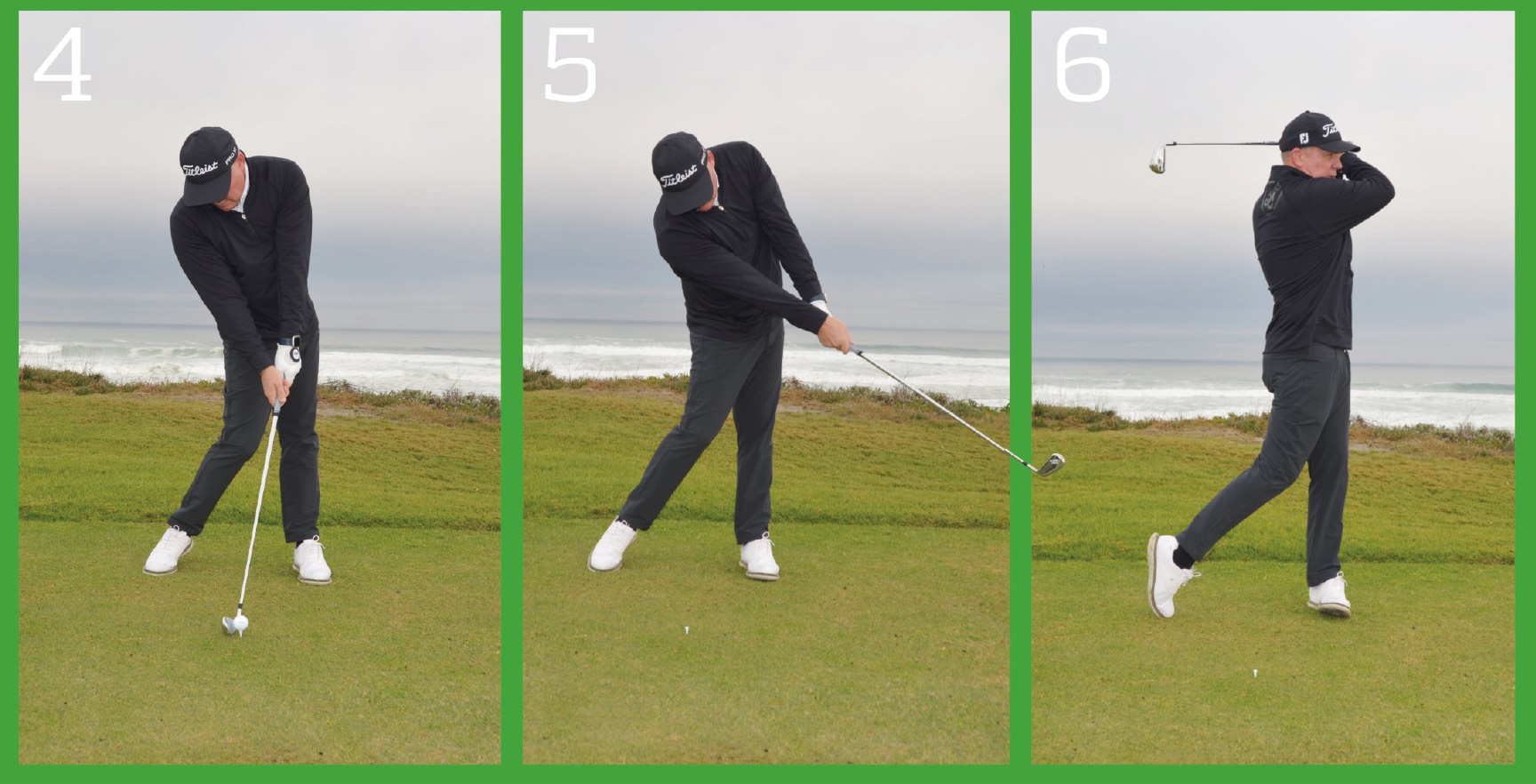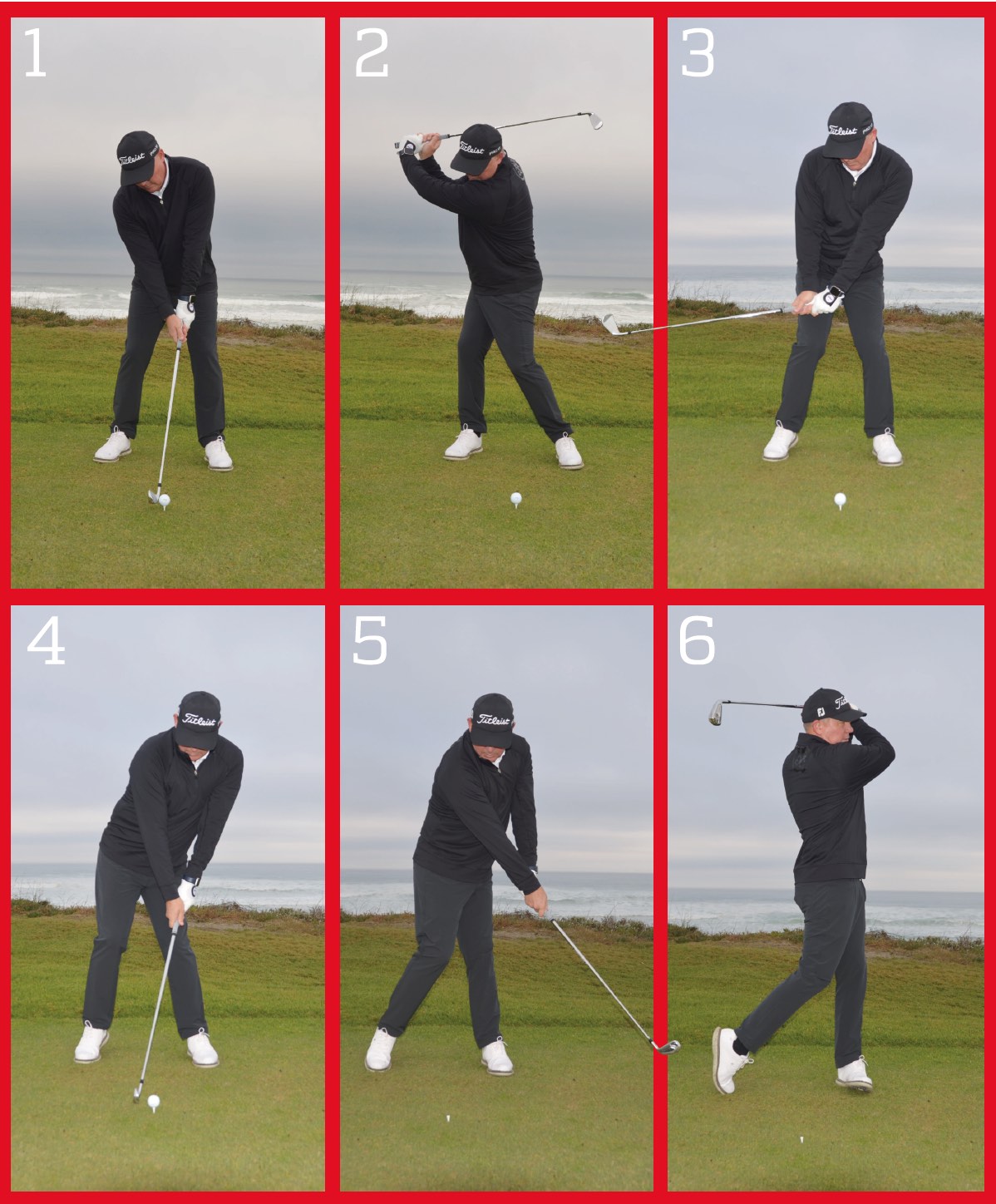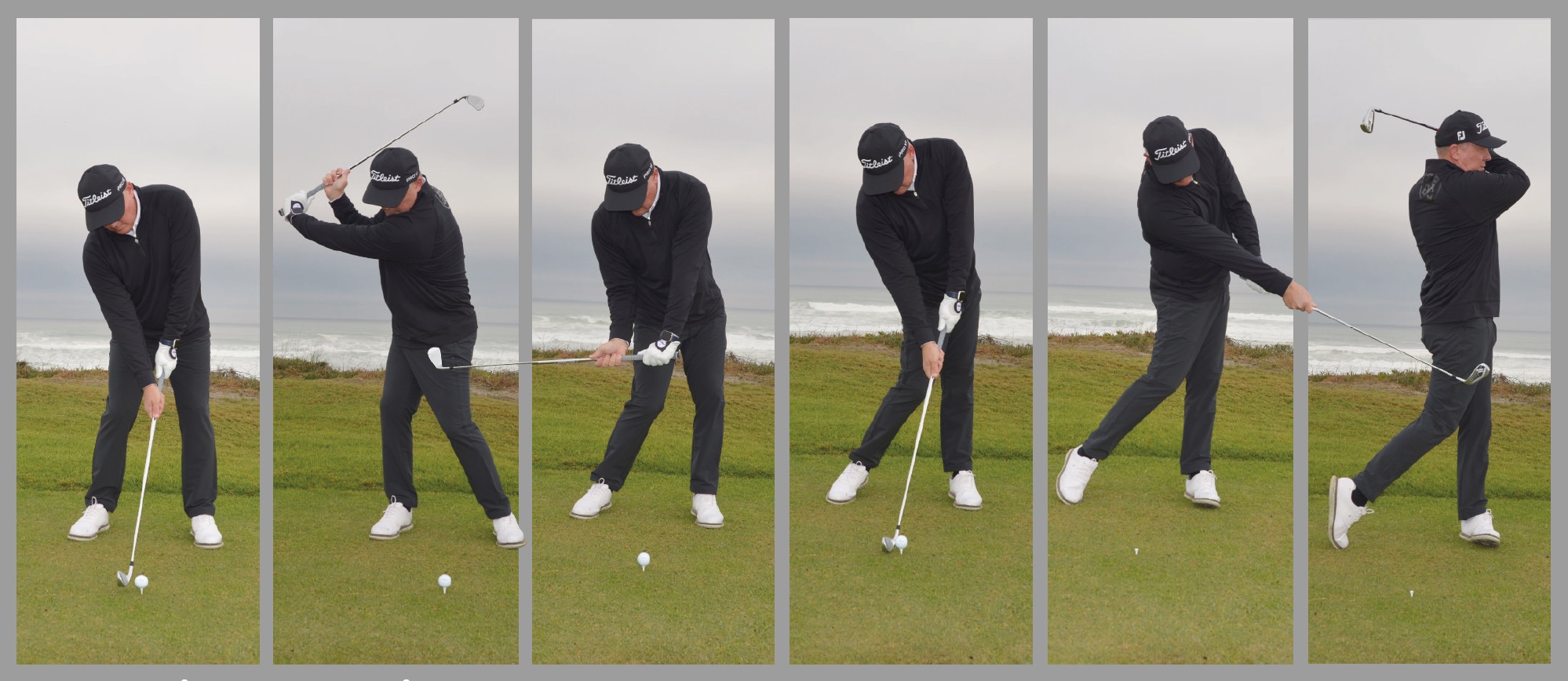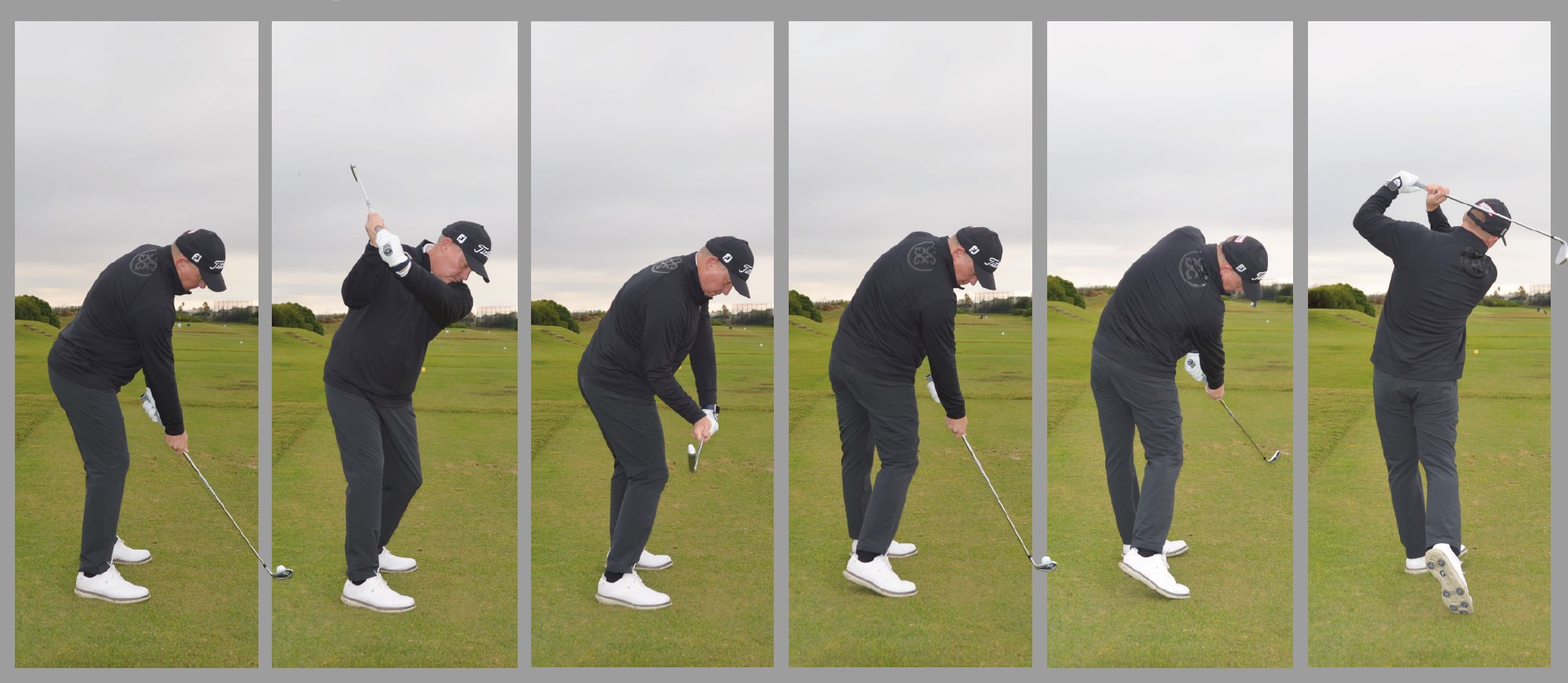In his latest instruction series, GRANT HEPBURN highlights some of the simplest, yet most effective, golfing drills ever devised.
I’ve come across many golfing drills in my time as a golf instructor. Not all drills work for each player and every golf teacher has their favourites. For me, a drill is most effective when it provides instant feedback to the golfer, either through guiding them into a good position or indicating when they are getting it wrong. Once you can feel the difference between right and wrong positions, you can work hard to eliminate these mistakes from your game.
One of my favourite teaching drills is the split-hand drill, which helps improve your dynamics throughout the downswing. Let me explain.
It is vital to make sure you get your club travelling on the correct path through impact. You want it to travel down the line, towards the target, as this allows you to deliver more power into the ball and more consistency because the club and the ball are travelling towards the target together.
To achieve this, the right side of your body needs to move under the left side, particularly your right shoulder, which moves under your chin.
Getting it right
As shown in the correct sequence, as I start my downswing, my right shoulder moves under my chin, which has the effect of keeping my arms close to my body, and swinging along the correct line, along with the club through the ball, down the target line.
Getting it wrong
In the incorrect sequence, notice how my right shoulder has moved out and around, which causes all sorts of issues. This is a very common amateur mistake, with the result being that my arms are thrown away from me and the club then travels across the ball through impact, from right to left. This is a recipe for disaster, as it causes either a big slice or a pull hook.
The split-hand drill
Here’s the most important part of this piece of instruction. Take your address position and then slide your right hand (for right-handed golfers) down the grip, so that it is almost on the steel. There should be a gap between your hands.
With your right hand being so much lower than the left, the split-hand grip forces your right shoulder lower than your left, your right hip lower than your left and your spine tilted to the right.
Although in this example it is a bit exaggerated, this is actually an excellent set-up position and one you should emulate with your normal grip.
Now I want you to hit golf balls like this off the tee. The split-hand grip forces your right shoulder to move under the left and the whole right side to move under the left side of your body.
Learn the feeling of how to do this so you can incorporate it into your normal grip swing. I find this to be such a good drill because it is almost impossible to keep your right shoulder high – and even if you were able to do it, you probably wouldn’t be able to hit the ball cleanly.
– Hepburn has been a regular face in Compleat Golfer for more than a decade. His CV includes time coaching on the European and PGA Tours, and an impressive list of top amateurs and pros. He is the CEO of Golf RSA and the South African Golf Development Board. Follow him on Twitter @granthepburn.
– This article first appeared in the June 2022 issue of Compleat Golfer magazine. Subscribe here!


